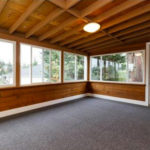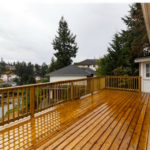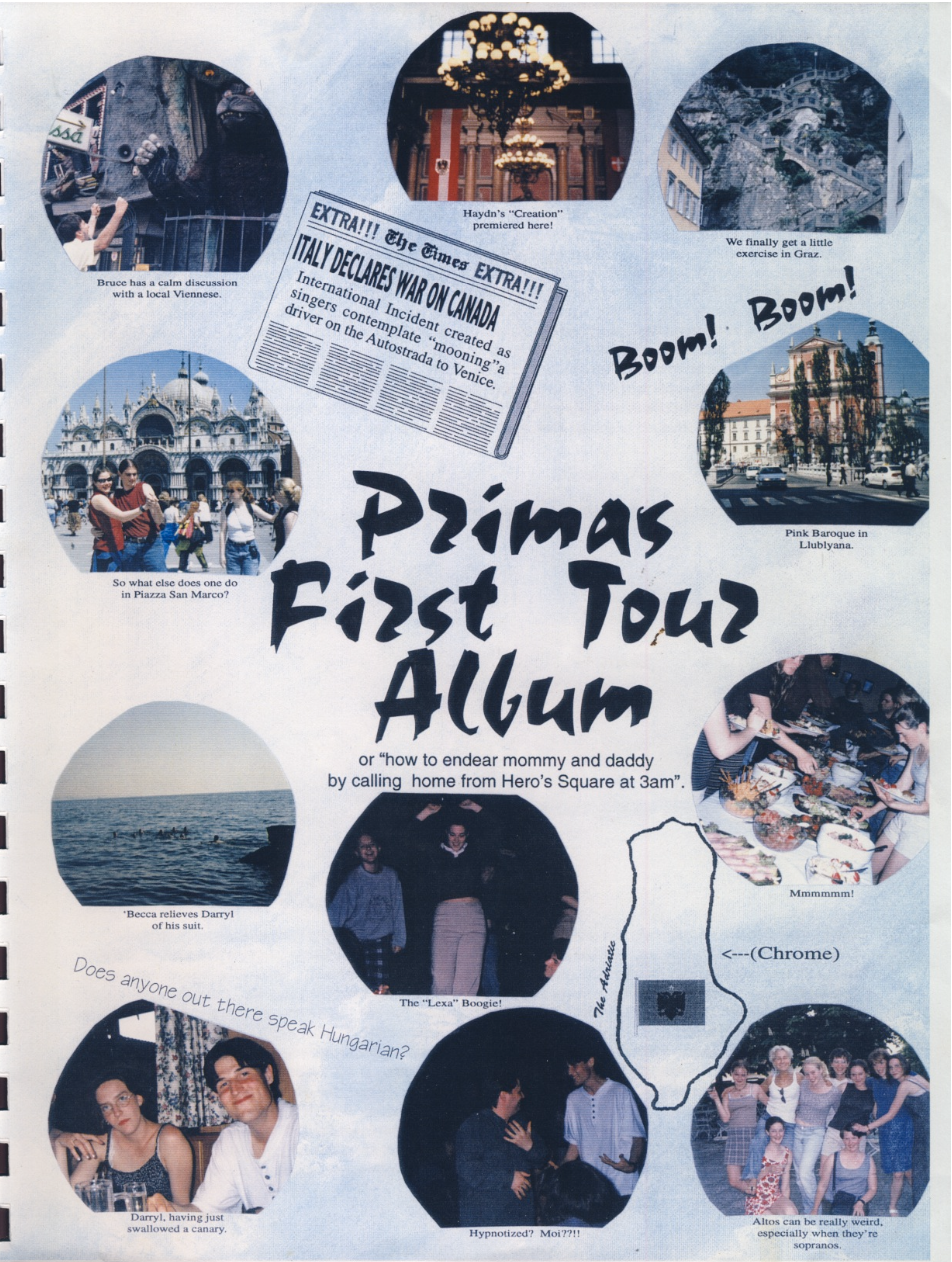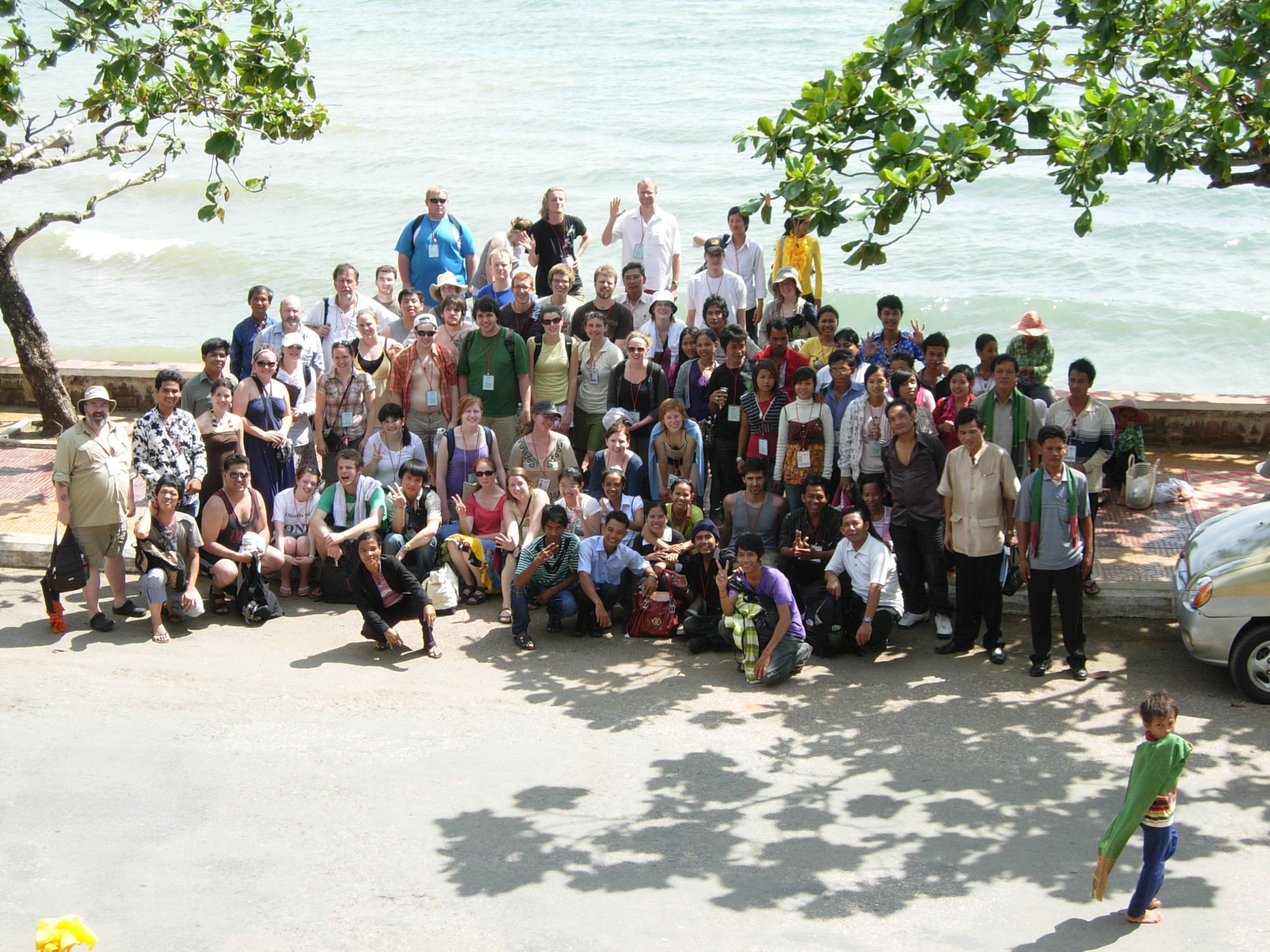Recording: Carmina Burana – O Fortuna, Schwatz he gat umbe
Author Archives: Bruce More
Seasons
 |
- 1973/74
- 1974/75
- 1975/76
- 1976/77
- 1977/78
- 1978/79
- 1980/81
- 1981/82
- 1982/83
- 1983/84
- 1984/85
- 1985/86
- 1986/87
- 1987/88
- 1988/89
- 1989/90
- 1990/91
- 1991/92
- 1992/93
- 1994/95
- 1995 REUNION
- 1995/96
- 1996/97
- 1997/98
- 1998/99
- 1999/00
- 2000/2001
- 2001/2002
- 2002/2003
- 2003/2004
- 2004/2005
- 2005/2006
- 2006/2007
- 2007/2008
- 2008/2009
1994/95
Tour 1998
Tours
Tours
Sight singing and ear training at the university level
On organizing a touring programme – Bruce E. More (2013)
The hardest tour to organize is the first one. A “culture” of touring has to be estab- lished before students (and parents) are willing to invest in the considerable cost of travel. Once the tour organizer’s credibility has been established by a successful tour, attracting participants to subsequent tours becomes exponentially easier. Generally all aspects of tour organizing become easier the more you tour.
“Sell” your students (and/or parents) on the tour as early in the year as possible (or even in previous years). Don’t be diverted by the notion that individuals may be able to travel more cheaply by themselves. Travelling alone is one thing, but travelling with a first-rate chorus is something entirely different. As I hope I’ve shown in the previ- ous chapters, it is an incredibly unique adventure that could never be duplicated by oneself. The choir tour provides experiences that can’t be achieved in any other way, such as performances in exotic venues, meaningful interactions with foreign “locals”, and shared activities with peers. It can’t be matched for ANY price! See related com- ments in Tour ‘93 and Tour ‘05.
A little hyperbole goes a long way. Find an overseas “invitation” of some sort – either a willing host in a foreign country or possibly an international festival (although the latter usually costs a lot more than you might want to spend). I found that organizing my own tours wherever possible helped keep costs down and permitted a much wider geographical range on any given tour. So, exaggerate, and make the prospective trip sound like it’s a “done deal”. The more there are visible variables, the greater diffi- culty you will have finding participants. See related comments in Tour ’89.
Search for hosting (billeting) organizations wherever possible. Unfortunately these are becoming increasingly difficult to find, as destination cities become overwhelmed with requests, which is a good reason to choose unusual destinations. If you use ho- tels, put as many singers in each room as possible. In North America, you can always book 4 to a room (2 double or queen beds). Gender separation assumed, college age singers don’t mind sharing a bed. See related comments in Tour ‘01.
Whenever possible, avoid ordering group meals. In areas where fast food restaurants and grocery stores are available, sug- gest a certain amount to cover meals purchased on their own. You can do this by “doling” out these amounts during the tour, but it’s much easier to make those funds part of the tour commitment: i.e. $x paid to the choir for tour costs, plus $x brought individually by each person for miscellaneous meals on the trip (be sure to identify such meals in your itinerary).
Make sure the singers have some sort of “stake” in the tour. If it’s free, they’ll treat it accordingly. There will be nothing lost to them if they drop out, although such a last minute change can be especially difficult for the ensemble. For the same reason, as well as to cover required costs to airlines & organizers, have several tour deposits due in the months before, starting with a significant one, some of it non-refundable.
Have some sort of group fund-raising available. I always had a pre-tour concert for which each singer was required to sell $200 worth of tickets. This could disadvantage those singers who may not be from the community, but I feel it’s essential for all sing- ers to participate in some way, and furthermore, it ensures an enthusiastic “send-off” audience. Similarly a minimum number of CD sales per singer could be required.
Sometimes varying itineraries make it possible for singers to combine the tour with other trips or visits. Assuming that there is no conflict with the requirements of a group air ticket, this isn’t a problem if the singers are able to meet the performance commitments of the tour. Generally individual itineraries that invade those commit- ments should not be allowed.
If you have access to an institutional fundraiser, involve him or her with your tour organization. Such people have a wealth of ideas and can identify local arts donors. One of the most successful fundraising endeavours I had in the later years was orga- nizing a luncheon where videos of previous tours and live student “testimonials” were presented to a small group of such potential major donors, with excellent results.
“Lighten up” when dealing with non-western countries. The “mañana” syndrome is not something you can fight. Relax when waiting for a response from that Cuban Minister of Cultural Affairs, or that Russian Town Council. In the Orient, don’t expect anything to happen surrounding Christmas and Chinese New Year (i.e. between mid- December and early February.)
Even at the post-secondary level, don’t permit any activities on the tour that an “en- lightened” parent wouldn’t be comfortable with. Give careful thought to mixed-gen- der rooming. See related comments in Tour ‘01.
Build traditions such as tour songs: songs to greet, songs to thank, even songs to chas- tise (although it’s best that these are used humorously rather than vindictively). See some Chamber Singers traditional tour songs at: http://people.finearts.uvic.ca/~bmore/Arrangementsite/Media/arrPDFs/Tour%20Songs.pdf
Encourage emotionally “needy” singers to “suffer in silence”. Illnesses, whether physical or perceived, can be contagious and thereby disadvantageous to the group’s morale. See related comments in Tour ‘97.
On long trips, limit the length of bus stops. See related comments in Tour ‘97.
Avoid travel medicine clinics wherever possible. See related comments in Tour ‘01.
Establish standards for hotel behaviour. See related comments in Tour ‘05
When planning tour repertoire, remember your audience. The expected audience norms can very widely between communities and countries. See related comments in Tour ‘01.
Without the backing of an educational institution, organizing overseas concert tours is difficult. The administrative and community donor support plus budgetary and net- working systems of such institutions are extremely useful to the tour organizer. See related comments in Tour ‘99
Have tour awards at the end of each tour, determined by a small group of singers who solicit suggestions from others. (Again, these should be humorous, not vindictive.) See related comments in Tour ‘03.
Have tour diaries in which each student writes about a day or two of the trip. (Then maybe you can write a book like this!)
Bruce More
From “The Composer Is the One In Front” 2013
Bruce & Connie’s new house
2445 Earls Court, Langford, BC, V9V 5V3












